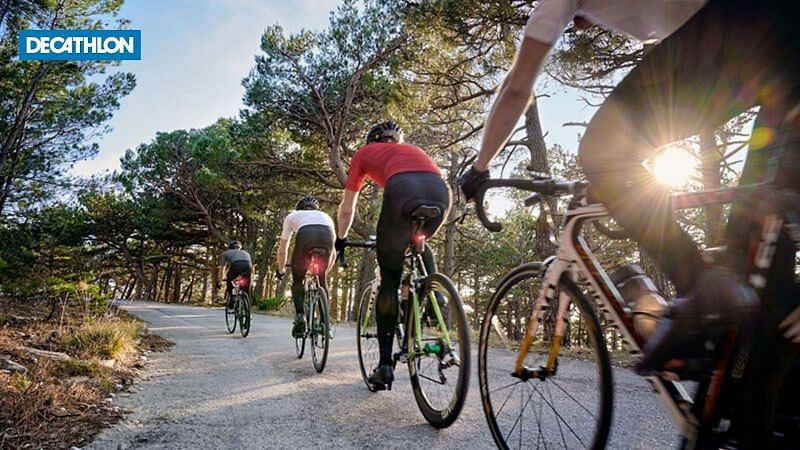
How do the Cycling Olympics work?
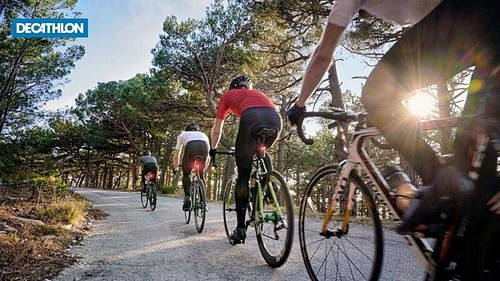
Every four years, the whole world comes together to watch the Olympics. As we are reaching the Tokyo 2021 (originally scheduled in 2020) Olympics, the excitement to research and binge on popcorn with a better understanding of the sports is the goal.
One of the five sports that have continued being a part of all the Olympic programmes and cult favourites, cycling events are what we are going to unravel today.
“If you want to start cycling, get your cycles and gear from Decathlon to start your journey”
How do the Cycling Olympics work?
The number of sports in the Olympics can change from one set of games to the next. And with so many to look forward to in the Tokyo Olympics 2021, cycling has been a core part of the programme since the first modern Olympics of 1896. It was then when the first men’s road race was organised. Whereas, women only competed in cycling at the Olympic Games in Los Angeles in 1984.
The individual time trial for both genders was introduced in Atlanta in 1996, exactly a century later. The 2012 Summer Olympics were the first at which men and women competed in the same number of events in all cycling disciplines.
What are the four types of cycling in the Olympics?
Though cycling has been a part of the Olympics for such a long time, what are the different events of the sport which have been contested at the Olympics? We’ll be breaking down the essential four parts of cycling today; road cycling, track cycling, mountain cycling and RMX. Check it out!
Road Cycling
As the name implies, road cycling usually takes place on paved roads. Road cycling is the most famous form, probably because of its simple yet modern format. People indulge in road cycling as a form of recreation, racing, commuting and utility cycling. In today’s time, there are two main categories of road cycling in the Olympics.
Individual Road Race
In simple terms, there’s a start point and the participants have to complete the Olympic road cycling distance the fastest to win.
Individual Time Trail
The Time trail is an event where cyclists race against the clock i.e. they try to complete the race in a given time.
Other than these, two more events, namely, Team Road Race and Team Time Trial were also contested in the Olympics before being discontinued.
If you’re interested to start Road Biking yourself, here’s an interesting range of road bikes you can look at
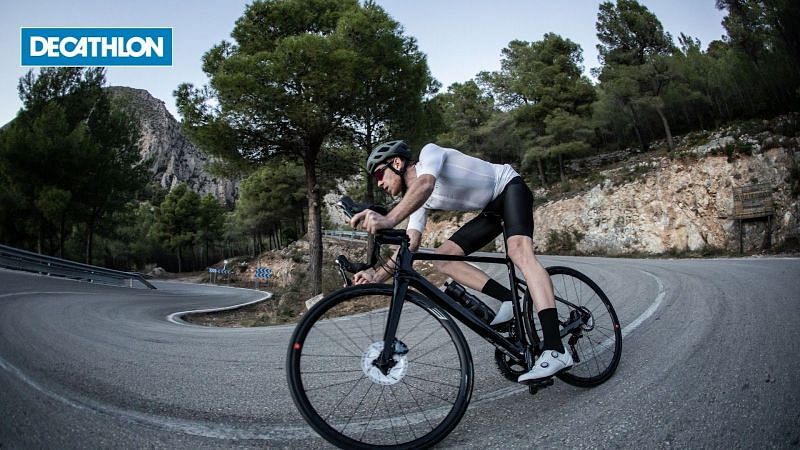
Track Cycling
Track Cycling is an event where cyclists race specially built tracks or velodromes using a track bicycle.
Track racing has been held at all Olympic Games except for 1912 in Stockholm when only a road race event was held. This road race was the longest race of any kind ever in Olympic history, held over a distance of 320km (199 miles), the winner finishing in 10 hours 42 minutes.
There are six different events on the Olympic program, all of which have men’s and women’s events.
Keirin
Keirin is a type of cycling race in which the participants sprint for the win following a speed-controlled start behind a motorised or non-motorised pacer. An eight-lap sprint race with six to seven riders on the track at one time. Riders begin behind a pace bike which gradually accelerates from 30km/h to 50km/h before pulling off the track with two and a half laps to go to allow an all-out sprint to the finish.
Madison
Madison is a form of track relay cycling with usually two members and sometimes three. It is named after Madison Square in New York. A relay race featuring teams of two riders in which points are awarded on intermediate sprints. Every 10 laps, the first four riders to cross the line earn points. Teams earn an additional 20 points when they lap the field, while teams who are lapped lose 20 points. While one team member is racing, the other slows down to take a rest before returning to the action with a hand touch from their teammate.
Omnium
The omnium is a multiple race event in track cycling. It consists of a Scratch Race, Tempo Race, Elimination Race and Points Race, as per the changes made in the format after the 2016 season. Formerly a two-day event consisting of six different races, this multi-discipline individual event now features riders accumulating points for their placements in four endurance races on one day. Riders add points to their running total during the sprints every 10 laps and by gaining laps on the field.
Individual Sprint
Individual sprint is a face-off between two or four cyclists in the velodrome. It is usually held as a 1 on 1 between cyclists who start on the same side of the track. The knockout competition includes best-of-three match-ups beginning in the quarterfinals. You should watch for the cat-and-mouse tactics as two riders compete side-by-side by pedalling slowly for two laps while carefully jockeying for position until a final sprint to the finish.
Team Sprint
The Team Sprint is a team track cycling event with a three-man team in the men’s category and a two-woman team in the women’s. As in the pursuit events, the teams start on the opposite side of the velodrome where the first cyclist has to complete his laps, followed by the second and third in that order. After completing a lap, the lead rider of each team pulls out of the race, meaning only one rider for each team finishes the race.
Team Pursuit
In team pursuit, a team of four cyclists compete against each other starting the race from the opposite sides of the velodrome. The objective here is to achieve the fastest time or catch the opponents who started the race at the other end of the track. A 4000m match race in which two teams of four riders begin on opposite sides of the track. One team tries to catch the other team, or at least post the fastest time, to advance to the medal races. Teams ride in a single file with riders taking turns at the lead while the others draft behind.
Mountain Cycling
There are multiple mountain bike events sanctioned by UCI, the international cycling federation, but the format contested at the Olympic Games is called cross-country. Mountain biking made its Olympic debut in Atlanta in 1996 where men’s and women’s events were both included.
Both the men’s and women’s events begin with a mass start of a circuit that is four to six kilometres in length. Riders take several laps of the circuit so that a race takes one hour 30 minutes to one hour 45 minutes to complete. Cross-country circuits must include a variety of terrains such as road sections, forest tracks, fields, and gravel paths, as well as significant amounts of climbing and descending.
If you’re interested to start Mountain Biking yourself, here’s an interesting range of mountain bikes you can look at
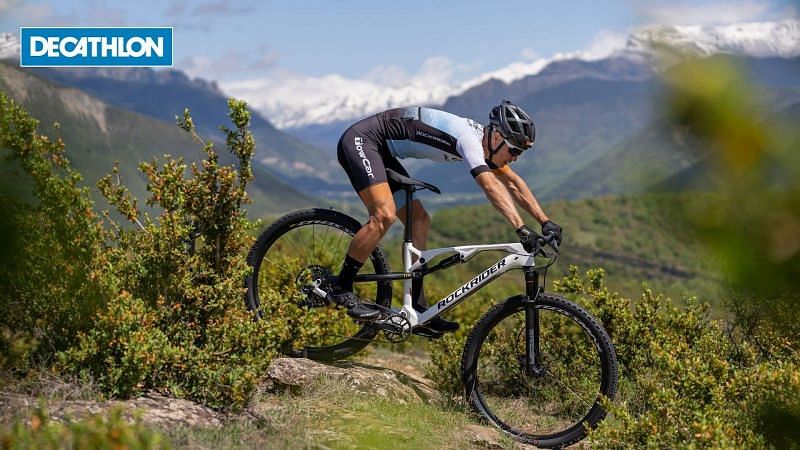
BMX
BMX (aka bicycle motocross) is the newest Olympic cycling discipline. It is a form of off-road bicycle racing. It is usually a sprint race on purposely built off-road tracks. BMX is the most recent cycling event in the Olympics and is held in two categories.
BMX racing sees riders compete in heats of eight, battling each other on short tracks that include bumps, jumps, and tight, banked corners. Each race around the track takes about 30 seconds.
BMX Individual
BMX Individual is usually a single lap race between individuals in a BMX cycle.
BMX Freestyle
BMX Freestyle is a bicycle stunt riding on BMX bikes. It will make its first appearance in the Olympics during the upcoming Tokyo Games in both men's and women’s categories.
Each rider will perform two one-minute runs. A panel of judges will give each rider a score between 0.00 and 99.99, which takes into account their entire performance from both runs. The judges’ scores are averaged to arrive at a rider’s official score. Judges will evaluate a rider’s sequence of tricks and how they use the course along with the amount of risk included in their runs.
How Do The Cycling Olympics Work? Well, now you know through these four disciplines.
Cycles & Accessories: A Helpful Guide
The sheer range of stuff available in a typical bike shop can be bewildering. We are here to help. While a lock, helmet and cycling shorts are must-haves when training, here are a few cycles and accessories that’ll help you become the cyclist you want to be.
The Rockrider ST 30 Unisex Trail & Urban Riding Cycle is Designed for leisure cycling on off-road trails and urban conditions. Great for a beginner, it provides ultimate cycling comfort as you enjoy Riding around with raised position and 10' Raised stem at Handlebar. 7 speed Grip shifter, Quick release for easy height adjustment & Transportation and MTB steel frame are just a few of the perks.
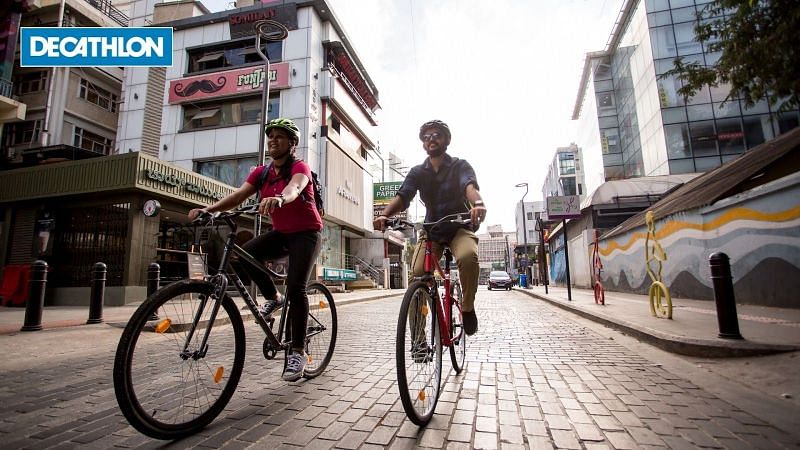
If you are a beginner looking to invest in more of a pro bike, then the Road Bike Triban RC 100 FB is for you. The reassuring tires, simple speed changes, and straight handlebars make it the ideal bike for starting. While the 25mm tires allow you to take on any road with more efficiency, the 6061 aluminium frame ensures comfortable road geometry.
Looking for a mountain bike? The Rockrider ST100 MTB is the one to go for because of its lightweight aluminium frame and 27.5'' tires on double-walled rims. Designed for getting started with MTB riding in dry and wet weather, this bike is both effective and strong. With great directional control, handle your trajectory with V-Brake pads and tyres with side knobs.
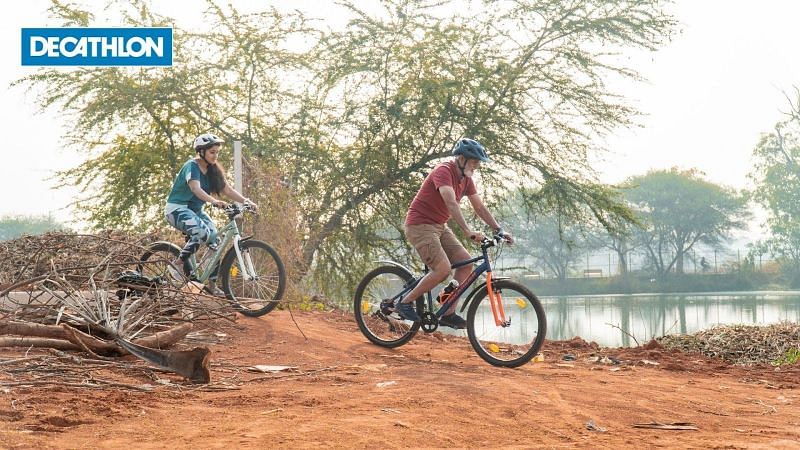
The best part about these bikes is that they all come with a two years guarantee and a lifetime warranty on frame & fork.
Apart from cycles, a home trainer is a great investment when looking to develop resistance. The smooth resistance of the In'Ride 500 Home Trainer makes it a powerful home trainer with smooth, quiet pedalling. It is easy and quick to attach your bike with a quick-release system and is just a fold away for compact storage.
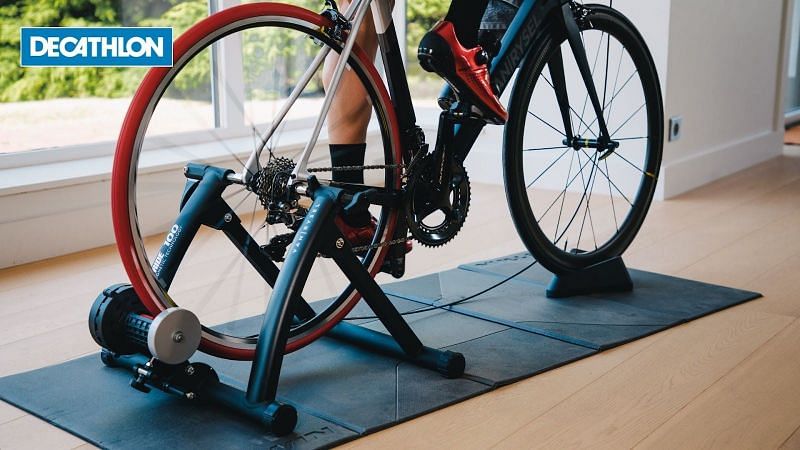
Decathlon offers a wide range of equipment you might want to add to your home gym including dumbbells of different weights, yoga mats, and exercise benches. It is the perfect one-stop destination for all your quality sports goods. It provides people across the world by developing innovative and affordably priced gym wear and gym equipment products. If you do not participate in the Olympics, you can surely train and build your physique.
Cycling Training Tips
Motivated yet? You’ve got your cycle, your gears and accessories, even a brand new outfit, ready to take on this new adventure. Well, we’re excited for you too. All we’ve got to say now is that cycling requires a lot of dedication. Here are the top five tips that’ll help you get the most out of your sessions on the bike.
- Set Your Bike Correctly - Everyone has a different leg, arm and torso length, so visiting a specialist bike shop, where you can have your saddle, stem and handlebar positions adjusted so that the bike is effectively tailored to your body, is an extremely worthwhile exercise.
- Pedal Smart - If you want to last long on a ride, you can’t go all out right from the start. That includes pedalling in an efficient gear, one that isn’t too hard and won’t fry your legs.
- Avoid The 'Bonk' - Running low on energy, or 'bonking' as it’s often called, will reduce your ability to keep going! Cycling will increase your energy requirements, so aim to eat small, frequent meals and snacks on the go to maintain energy levels.
- Save The Efforts For The End - Instead of pumping out intervals 15 or 20 minutes into a ride when you’re all warmed up, save them for the finish when you’re a little fatigued. You’ll reap both mental and physical rewards that way.
- Use the Rule of Thirds - If a long ride still seems overwhelming, divide it into three more or less equal distances and have a plan for each of those segments. The first segment should feel easy. During the second, you should start to feel your muscles working. If you have any fuel left, show it in the last third.
You can always participate in cycling workshops and events with Allforsport by Decathlon to kickstart your practice and learn from experts.
How do the cycling Olympics work? Oh, you know it all now. So what’s the hold-up? Get your bike of choice from Decathlon and start training today!
If you liked this article, head over to Decathlon Blog for more such content on practice.